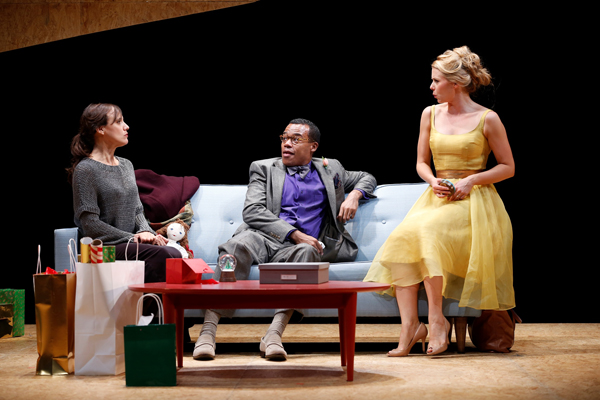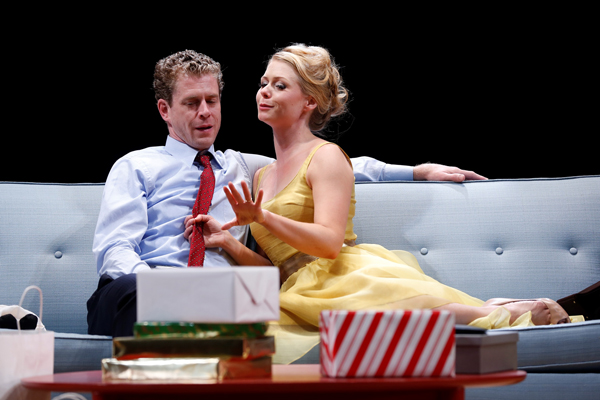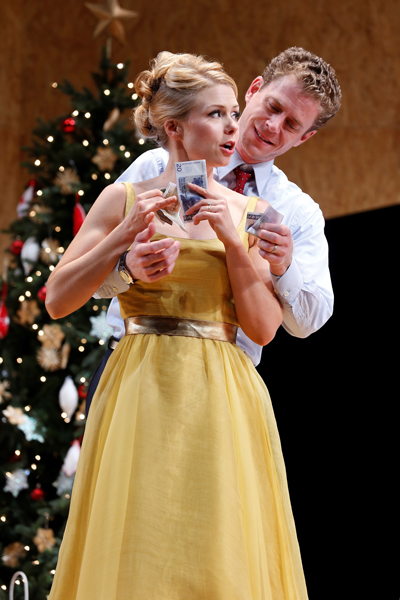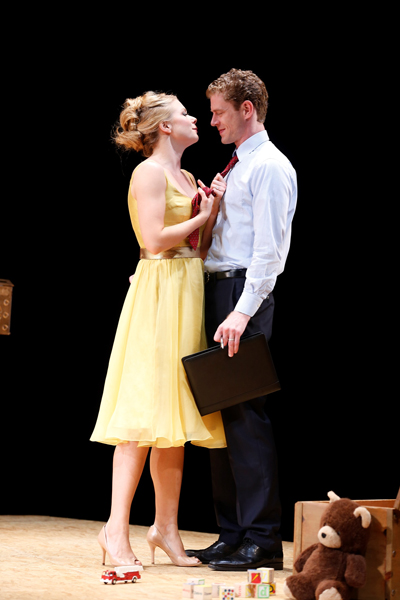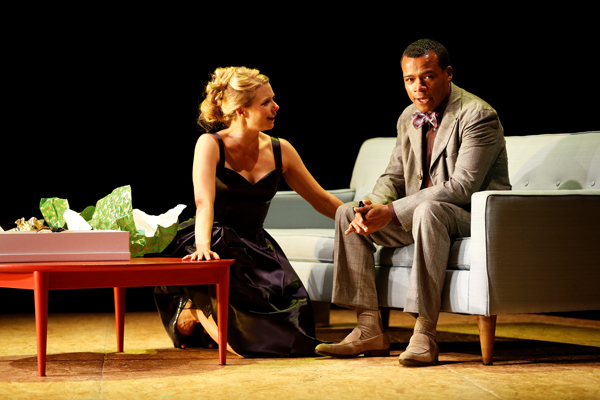
Connecticut Theater
"Nora"
Westport Country Playhouse, Westport
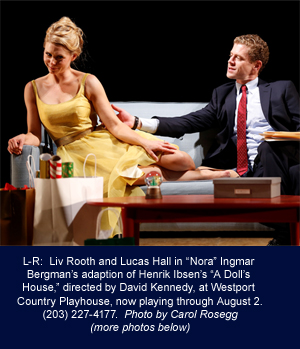 Ingmar Bergman has taken on Henrik Ibsen. “Nora,” now at the Westport Country Playhouse, is Bergman’s adaptation of “A Doll’s House.” In short, the noted 20th century filmmaker has taken on the noted 19th century playwright.
Ingmar Bergman has taken on Henrik Ibsen. “Nora,” now at the Westport Country Playhouse, is Bergman’s adaptation of “A Doll’s House.” In short, the noted 20th century filmmaker has taken on the noted 19th century playwright.
How successful is this modern version of the Ibsen classic? For starters, its imagery is striking—and strikingly cinematic. Even before the play opens, its stage reveals a severe wall adorned by a lone tall window. Is it a symbol of the drama to follow? Is someone imprisoned within…or shut out?
As the play unfolds Bergman’s touch is everywhere. And director David Kennedy, with his designers, brings this cinematic concept to life. The Helmer living room is surrounded by a stark black wall, providing striking contrast to Mrs. Helmer’s fluffy yellow dress and high-piled blonde hair. The contrasts of light and dark are dramatic, highly effective. Swedish Modern, in fact.
Yet, beyond the successful stage set, how effective is “Nora” as a drama? If a review focuses on the stage set, what does that say about the adaptation and the production itself?
But, first, consider the basic tale: Nora is the child/wife of Torvald—adored, indulged, and patronized by him. She, in turn, fills that role to the hilt, serving him as a plaything, just as her children are toys to her. In short, throughout their marriage, they play games. But Nora hides a dark secret and fends off a blackmailer who knows that secret. Not until the very end, when Torvald discovers the secret, does he reveal his true nature, as does she. We cannot give away the game, but it suffices to say that “A Doll’s House” (and, here, “Nora”) is the ultimate feminist play. Ibsen said it all.
Ibsen was, in fact, far ahead of his time, while Bergman is merely restating the obvious. Sadly, additional touches, such as gratuitous obscenity, gratuitous frontal nudity, and an overlong feminist tirade in the final scene, cripples “Nora.” Thus it falls short of its original model.
In general, director David Kennedy gets solid performances from his cast, particularly Liv Rooth in the demanding title role, and keeps the show moving at a lively pace.
But the true hero of this show is the design team--Kristen Robinson (sets), Katherine Roth (costumes), and Matthew Richards (lighting). They never let us forget that this is a filmmaker’s version of a noted drama. In short, Swedish Modern.
--Irene Backalenick
July 25, 2014
